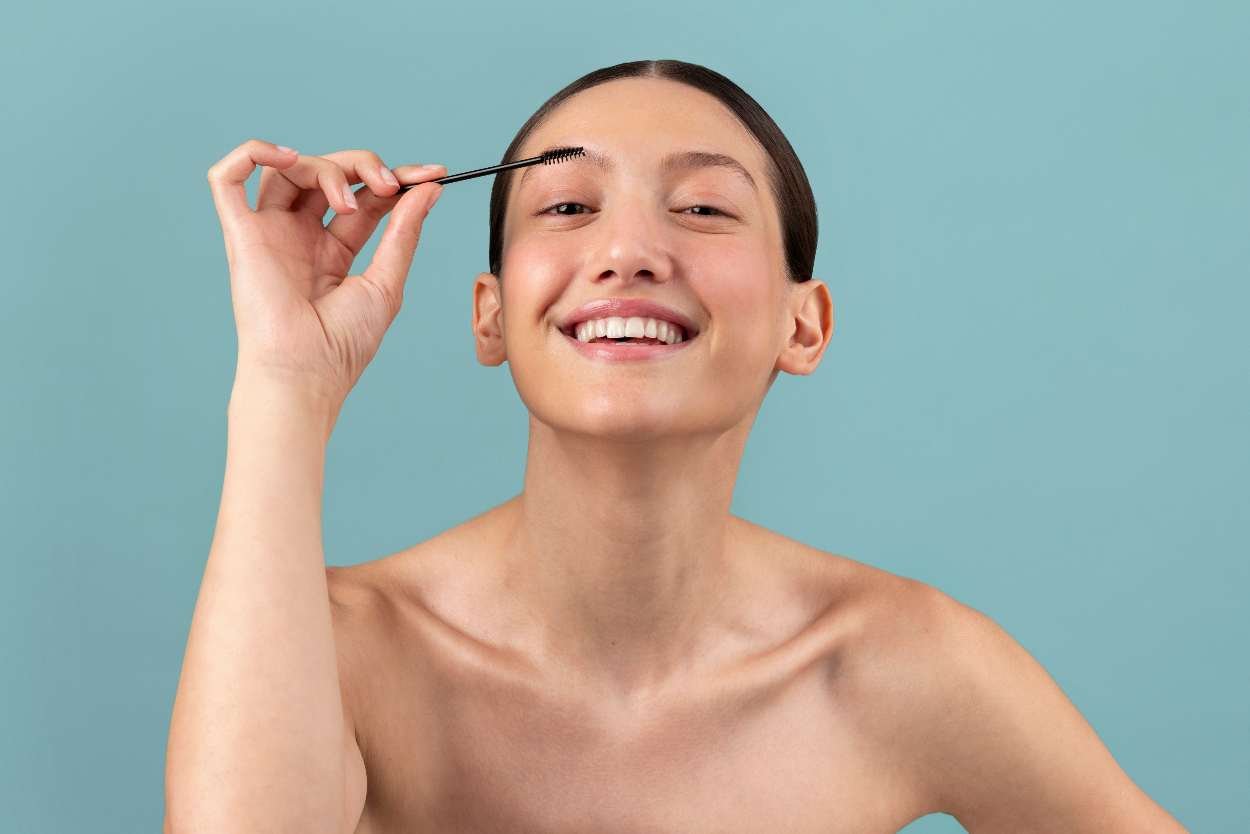Peptides have become the latest buzzword in mascara formulations, promising everything from longer lashes to stronger hair follicles. But does science back these claims, or are cosmetic companies simply riding the wave of peptides? After analyzing clinical studies and speaking with cosmetic chemists, the answer is more nuanced than you might expect.
What Are Peptides and Why Are They in Your Mascara?
Peptides are short chains of amino acids that serve as building blocks for proteins. In the context of lash care, they function as biological messengers that can influence hair growth cycles and follicle health. Unlike traditional mascara ingredients that coat and color lashes, peptides aim to work at the cellular level.
The three main types of peptides found in mascara formulations include:
- Signal peptides: Act as messengers that tell skin cells what actions to take, like repairing or renewing themselves.
- Carrier peptides: Help deliver vital minerals directly to hair follicles to support their strength and function.
- Neurotransmitter peptides: May influence nerve signals that affect hair growth
Science Behind Peptide-Enhanced Mascaras
Recent clinical research has provided some validation for the use of peptides in lash products. A 2024 study reported that peptide-based eyelash serums showed visible improvements in lash structure as early as Week 4, with more pronounced results observed by Week 12.
However, it’s important to note that most peptide research focuses on dedicated lash serums rather than mascaras. The concentration and delivery method in mascara formulations may differ significantly from clinical study conditions.
Key Peptides Found in Mascara Formulations
| Peptide Type | Function | Clinical Evidence |
|---|---|---|
| Acetyl Tetrapeptide-3 | Strengthens lash structure | Limited manufacturer studies |
| Biotinoyl Tripeptide-1 | Reduces hair loss and improves follicle health | Moderate research support |
| Copper Tripeptide-1 | Stimulates collagen production | Well-documented in skincare |
| Hexapeptide-8 | May influence growth factors | Minimal independent research |
Results: What Users Actually Experience
Based on consumer feedback and beauty industry reports, peptide mascaras tend to show mixed results:
Positive outcomes reported:
- Lashes feel softer and more flexible
- Reduced breakage during makeup removal
- Gradual improvement in lash appearance over 8-12 weeks
- Better conditioning compared to traditional mascaras
Common limitations:
- Results take significantly longer than claimed (often 2-3 months)
- Benefits may be more subtle than dramatic
- Higher price point compared to regular mascaras
- Some users experience no noticeable difference
Expert Perspective: Cosmetic Chemist Insights
Dr. Sarah Martinez, a cosmetic chemist with 15 years of experience, explains: “Peptides in mascara face a fundamental challenge – they need to penetrate the hair shaft and reach the follicle to be effective. Most mascara formulations are designed to coat and adhere to lashes, not necessarily to deliver active ingredients deep into the hair structure.”
Licensed aesthetician Jas Imani notes that peptides are “great for fortifying lash hair and helping lashes grow stronger” and are “helpful for nourishing brittle and frail lashes.”
Clinical Evidence: Separating Fact from Marketing
The peptide research landscape for lash enhancement is still developing. Most studies are sponsored by ingredient manufacturers or cosmetic companies, which can introduce bias into the research. Independent, peer-reviewed research, specifically on peptide mascaras, remains limited.
Facts:
- Peptides can improve hair structure when properly delivered
- Some peptides have shown promise in follicle health studies
Areas needing more research:
- Optimal peptide concentrations in mascara formulations
- Comparative effectiveness against traditional lash treatments
- Long-term safety profiles for daily use
Peptide Mascara vs. Traditional Mascara: The Honest Comparison
Traditional Mascara Benefits:
- Immediate visual results
- Lower cost
- Wide variety of formulations
- Proven track record for safety
- Easy removal
Peptide Mascara Benefits:
- Potential long-term lash improvement
- Conditioning properties
- It may reduce lash breakage
- Could support overall lash health
Trade-offs:
- Higher prices for peptide formulations
- Longer timeline for visible results
- Mixed scientific evidence
- It may require consistent use for months
How to Choose the Right Peptide Mascara
If you’re considering a peptide mascara, here are key factors to evaluate:
- Ingredient transparency: Look for brands that clearly list the types and concentrations of peptides. Clinical studies support peptides like Myristoyl Pentapeptide-17, and Biotinoyl Tripeptide-1” as proven actives.
- Realistic expectations: Don’t expect dramatic results within a short period. Most users report gradual improvements over a period of 2-3 months of consistent use.
- Budget considerations: Peptide mascaras typically cost two to three times more than traditional formulas. Calculate the long-term investment before committing.
Truth About Peptide Concentrations
One critical issue that is rarely discussed is the peptide concentration in mascara formulations. Many products contain peptides in concentrations too low to be effective. The cosmetic industry isn’t required to disclose exact percentages, making it difficult for consumers to assess potential efficacy.
Industry insiders suggest that effective peptide concentrations typically range from 0.5% to 3% in lash serums, but mascara formulations may contain significantly less due to texture and application requirements.
Common Peptide Mascara Myths Debunked
- Myth 1: “Results appear within two weeks.” Reality: Lash growth cycles take 6-8 weeks. Any improvements before this timeframe are likely due to conditioning effects rather than actual growth.
- Myth 2: “All peptides work the same way.” Reality: Different peptides have distinct mechanisms of action. Copper peptides focus on follicle health, while signal peptides may influence growth factors.
- Myth 3: “More peptides equals better results.” Reality: While some products claim to include “more peptides than any other lash serum on the market,” their effectiveness ultimately depends on proper concentrations and delivery methods rather than sheer quantity.
Safety Considerations and Side Effects
Peptide mascaras are generally considered safe for most users, but some considerations include:
Potential side effects:
- Eye irritation in sensitive individuals
- Allergic reactions to specific peptides
- Increased sensitivity during initial use
Contraindications:
- Pregnancy and breastfeeding (limited safety data)
- Active eye infections or inflammation
- Recent eye surgery or treatments
Economics of Peptide Mascaras
The peptide mascara market has experienced significant growth, with prices ranging from $25 to $150 per tube. This premium pricing reflects both the costs of ingredients and the marketing positioning. However, cost-effectiveness varies widely between brands.
Price breakdown considerations:
- Ingredient sourcing and quality
- Research and development costs
- Brand positioning and marketing
- Manufacturing complexity
Alternative Approaches to Lash Enhancement
If peptide mascaras seem too expensive or uncertain, consider these alternatives:
- Lash serums: Higher peptide concentrations than mascaras but require separate application
- Lash primers: Can provide conditioning benefits at a lower cost
- Proper removal techniques: Gentle makeup removal can prevent lash damage
- Nutritional support: Biotin and other vitamins may support overall hair health
Professional Recommendations
Based on interviews with cosmetic chemists and dermatologists, here’s the professional consensus:
Who might benefit from peptide mascaras:
- People with naturally thin or brittle lashes
- Those who frequently use waterproof mascara
- Users willing to invest in long-term lash health
- Individuals with damaged lashes from extensions
Who should stick with traditional mascaras:
- Budget-conscious consumers
- Those wanting immediate dramatic results
- People with sensitive eyes
- Users satisfied with their current lash appearance
Future of Peptide Technology in Mascaras
Cosmetic technology continues advancing, with new delivery systems and peptide combinations under development. Emerging trends include:
- Encapsulation technology for better peptide stability
- Combination peptide-prostaglandin formulations
- Microencapsulated time-release peptides
- Biotechnology-derived peptides
Making an Informed Decision
The question isn’t whether peptides work – they do under the right conditions. The real question is whether peptide mascaras can effectively deliver those conditions. Based on current evidence, the answer is: sometimes, for some people, with realistic expectations.
Consider peptide mascara if:
- You’re willing to use it consistently for months
- You have realistic expectations about results
- You’re investing in long-term lash health
- You don’t mind paying premium prices
Stick with traditional mascara if:
- You want immediate, visible results
- Budget is a primary concern
- You’re satisfied with your current lash appearance
- Do you prefer proven established formulations
Conclusion
Peptides in mascara represent a legitimate approach to lash enhancement, but they’re not magic bullets. The science supports their potential benefits, but real-world results vary significantly between individuals. The key is approaching peptide mascaras with realistic expectations and understanding that they’re more of a long-term investment in lash health rather than an instant beauty fix.
For most consumers, the decision comes down to personal priorities: immediate results and proven performance versus potential long-term benefits and conditioning effects. Neither choice is wrong – it’s about matching your expectations with the right product approach.
The peptide mascara trend isn’t just hype, but it’s not revolutionary either. It’s a legitimate option for those willing to invest time and money in gradual lash improvement, while traditional mascaras remain perfectly viable for those prioritizing immediate results and value.
Frequently Asked Questions
- Q: How long do peptide mascaras take to show results? A: Most users report initial improvements in lash texture within 4-6 weeks, with more noticeable growth effects appearing after 8-12 weeks of consistent use.
- Q: Are peptide mascaras safe for daily use? A: Yes, for most people. However, individuals with sensitive eyes should perform a patch test first and discontinue use if irritation occurs.
- Q: Can I use peptide mascara with lash extensions? A: Check with your lash technician, as some peptide formulations may interact with the extension adhesive.
- Q: Do peptide mascaras work better than lash serums? A: Dedicated lash serums typically contain higher peptide concentrations and may be more effective for growth, while peptide mascaras offer the convenience of makeup application with conditioning benefits.
- Q: Will my lashes return to normal if I stop using peptide mascara? A: Any growth benefits will gradually diminish over time, but conditioning effects may provide some lasting improvement to lash health.
This article is for informational purposes only and does not constitute medical advice. Consult with a dermatologist or healthcare provider before starting any new beauty regimen, especially if you have sensitive eyes or skin conditions.





